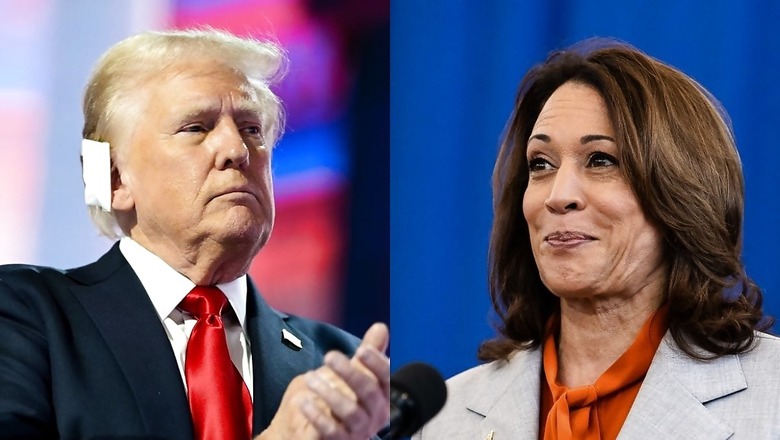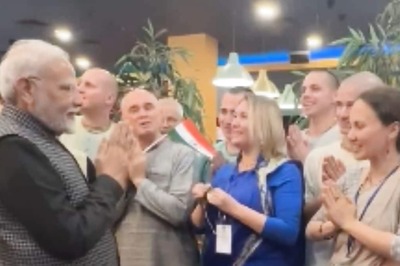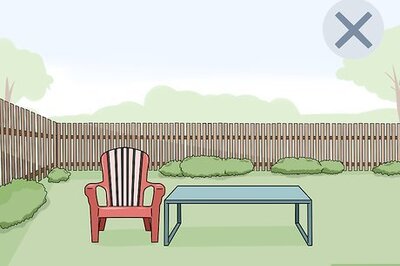
views
In just a few weeks, the US will vote to elect its President using paper ballots. The process of election is long and unique, and filled with unfamiliar terminology such as primaries, caucuses and Electoral College.
A year before the election, candidates from the Democrat and the Republican parties begin their campaign trails. This part of the campaign includes setting up their team and conducting rallies to seek support and fundraise for their campaigns.
Both parties’ candidates appear in televised debates in which they get a chance to defend their stand on issues and policies.
Let’s understand how the election works, why certain states get more attention, what is popular vote and who are the candidates.
What is the Difference Between Primaries and Caucuses?
Primaries and Caucuses are two ways that help states and political parties choose presidential nominees.
Primary voters choose their preferred candidate anonymously by casting secret ballots. But it is the delegates to the national party conventions who ultimately select the presidential nominees for each major party. Candidates are awarded delegates in most states by winning the primary elections and caucuses. The process is conducted 6-9 months before the presidential polls.
To get the Republican nomination, a candidate needs to get at least 1,215 delegates. For the Democratic nomination, it’s 1,968 delegates.
Primaries are run by the state whereas caucuses are organised by the parties themselves. They are the meetings run by political parties that are held at the county, district, or precinct level. Some caucuses choose candidates by secret ballot. Others require participants to divide themselves into groups according to the candidate they support. Candidates give speeches and get others to join their group.
During an open primary or caucus, voters do not have to be registered with a political party to take part in its primary or caucus, while in a closed primary or caucus, only voters registered with that party can take part and vote.
What is a National Convention?
After the states hold primaries and caucuses in the US, the next event is the party convention. It is at those conventions that the Democratic and Republican parties confirm their respective nominee for the presidency, based on the outcome of the primaries and caucuses.
Each convention includes a series of procedural votes, including on event rules and the party’s platform, but the main event is the presidential nomination. In a roll call, each state announces from the convention floor how many delegates it is awarding the nominees.
Delegates are generally assigned to vote for a candidate according to their state’s primary or caucus results. If a candidate wins a majority of the delegates, they win the nomination.
What is the General Election?
People in the US vote for one President and one Vice-President. The name of the candidates will be listed on the general ballot. Usually, candidates from minor political parties and independent candidates don’t have a national convention. But they may be on the ballot on a state-by-state basis if they meet the eligibility requirements.
When people cast their vote, they are actually voting for a group of people known as electors. People in the US don’t directly elect their President and Vice-President.
Each candidate running for President has their own group of electors (known as a slate). When voting for a Presidential candidate, the person is actually voting for his candidate’s preferred electors.
There are 538 electors in total, representing 435 members of the House of Representatives, 100 Senators, and 3 electors from Washington DC. The magic number for victory is 270 electoral votes — an absolute majority.
What is an Electoral College?
The Electoral College chooses the electors or representatives from each state, who cast their vote and determine who will be the president.
The candidate who wins the most votes in a state typically takes all of that state’s electoral votes under a “winner-take-all” system, used in 48 states and Washington DC. Maine and Nebraska, however, use a proportional system that can split electoral votes based on district-level and statewide results.
A candidate needs the vote of at least 270 electors — more than half of all electors — to win the presidential election.
If no candidate gets an absolute majority then the House of Representatives elects the president.
What Does Popular Vote Mean?
It is possible that the candidate who is most popular with voters may not end up being elected president. In 2016, Hillary Clinton gained almost three million more votes than Donald Trump, but he won the presidency with 304 Electoral College votes to her 227.
In 2000, George W Bush won with 271 Electoral College votes, but Democrat candidate Al Gore won the popular vote by more than half a million.
A projected winner is announced on election night, but the actual Electoral College vote happens in December when the electors meet in their states.
Who are the Candidates?
US Vice President Kamala Harris, who succeeded Joe Biden on July 21, is the leading Democrat candidate. The 60-year-old leader has chosen Minnesota Governor Tim Walz, 60, as her running mate.
Harris is the current vice president and the highest-ranking female political official in US history. She previously served as a US senator, California attorney general and the San Francisco district attorney.
On the Republican side, former US President Donald Trump is running again at 78 years old, with Ohio Senator JD Vance, 40, as his vice-presidential candidate.
In May 2024, Trump was found guilty of all charges at his New York hush money criminal trial. He also faces charges in three other cases, including over his efforts to overturn the 2020 election.
Apart from the two major party candidates, Jill Stein is running for the Green Party, having previously contested in 2012 and 2016, while Chase Oliver is the Libertarian Party’s candidate. Oliver is a left-leaning Libertarian who used to be a Democrat. He won his party’s nomination in May. He said he became politically active as an opponent of the Iraq War and describes himself as “armed and gay”, as mentioned by The New York Times. He opposes Israel’s actions in Gaza and wants to abolish the Federal Reserve.

















Comments
0 comment